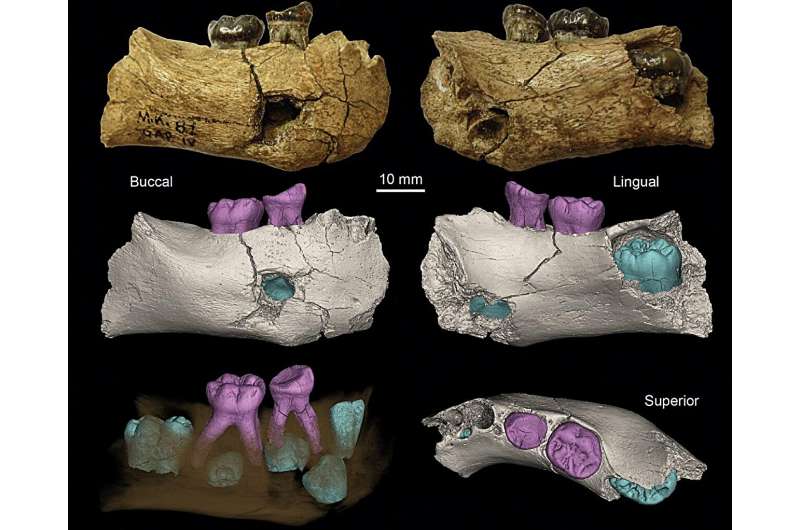Reexamination of ancient jawbone found in Ethiopia concludes it came from Homo erectus infant

An international team of geoscientists, archaeologists and anthropologists has found evidence that strongly suggests an infant jawbone found in the Ethiopian highlands came from a Homo erectus child. In their study, reported in the journal Science, the group conducted multiple tests to learn the true nature of the fossil.
The jawbone was first uncovered back in 1981 at the Garba IV dig site in the Ethiopian highlands by a different team of researchers—it was subsequently nicknamed Little Garba. Over the years, several groups have tested the fossil to learn the species of the individual. No clear consensus was established, but it was found to be a member of the genus Homo.
To pinpoint the species, the researchers on this new effort applied synchrotron imaging to the teeth and compared those images with those of other hominin species. This showed the closest match to be Homo erectus.
Prior research had shown that the layers of sediment in which the jawbone was found were approximately 2 million years old, suggesting that Little Garba lived approximately 2 million years ago, making the jawbone one of the oldest known Homo erectus fossils ever found.
The research team then turned their attention to the stone tools found at the same level at the dig site. They found what they describe as a transition from Oldowan tools to Acheulean tools, which were more advanced. Prior research had shown that such tools were developed approximately 2 million years ago, coinciding with the age of Little Garba.
The researchers conclude that the evidence found at the Garba IV site suggests that once Homo erectus populations arrived in the highlands, they had to adapt to both the thinner air (Garba IV sits at 2,000 meters above sea level) and geographical conditions. That included improving their tools and weapons, which would allow them not only to take down prey found in the area, but to process it for use as food and materials for keeping warm in the cooler highlands.
More information: Margherita Mussi et al, Early Homo erectus lived at high altitudes and produced both Oldowan and Acheulean tools, Science (2023). DOI: 10.1126/science.add9115
Journal information: Science
© 2023 Science X NetworkRemains found in China may belong to third human lineage
No comments:
Post a Comment